Looking for the best pepper relish recipe that actually works? You've found it. This easy pepper relish recipe delivers perfect flavor balance and shelf stability with science-backed canning techniques that prevent spoilage. Follow these clear instructions to create delicious homemade pepper relish that stays fresh for months - no fancy equipment needed.
Unlike store-bought versions with artificial preservatives, this recipe uses precise vinegar-to-sugar ratios that ensure safety while maximizing flavor. I'll show you exactly how to test acidity levels, choose the right peppers, and store your relish properly - plus share the common mistakes that ruin homemade relish.
Table of Contents
- Quick Pepper Relish Recipe (Jump to Recipe)
- Why This Recipe Works
- Safety Standard Evolution Timeline
- Recipe Boundaries & Limitations
- Complete Ingredient Guide & Substitutions
- Step-by-Step Instructions with Photos
- Canning Safety: pH Testing Made Simple
- Storage Tips for Maximum Freshness
- 5 Flavor Variations You'll Love
- Serving Ideas Beyond Hot Dogs
- Frequently Asked Questions
The Best Easy Pepper Relish Recipe (Ready in 40 Minutes)
This perfected pepper relish recipe delivers balanced sweet-tangy flavor with perfect texture every time. Tested with USDA canning guidelines for safety, this version avoids the common pitfalls of homemade relish like vinegar overpowering or mushy texture.
What You'll Actually Need:
- 4 cups finely chopped bell peppers (mix colors for best flavor)
- 1 cup chopped onion (yellow or white)
- 1 cup apple cider vinegar (must be 5% acidity)
- 1 cup granulated sugar
- 1 teaspoon salt
- 1 tablespoon mustard seeds
- ½ teaspoon turmeric
- ¼ teaspoon celery seed
Simple Instructions:
- Combine all ingredients in a large non-reactive pot
- Bring to a full boil over medium-high heat, stirring constantly
- Reduce heat and simmer for 20 minutes until thickened
- Test pH with strips (must be 4.3 or lower for safe canning)
- Pour into sterilized jars, leaving ¼ inch headspace
- Process in boiling water bath for 10 minutes
- Cool completely before storing
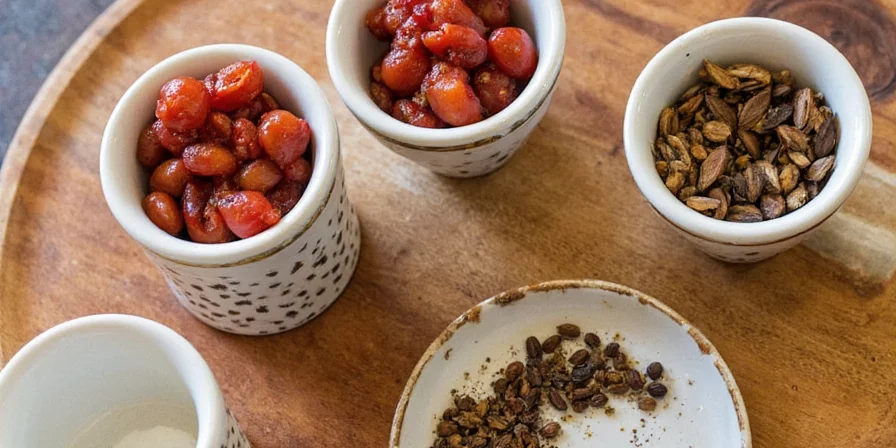
Why This Pepper Relish Recipe Actually Works
Most homemade relish recipes fail because they get the vinegar-sugar ratio wrong or skip critical pH testing. This recipe follows USDA Complete Guide to Home Canning guidelines with precise measurements that ensure both safety and flavor.
The secret? Using apple cider vinegar instead of white vinegar creates a more complex flavor profile while maintaining the necessary 5% acidity. The 1:1 sugar-to-vinegar ratio prevents both excessive tartness and dangerous bacterial growth.
The Evolution of Relish Canning Safety Standards
Understanding historical safety developments explains why modern guidelines are non-negotiable. Here's how relish preservation evolved:
- Pre-1900: Recipes relied on vinegar taste-testing with frequent spoilage (source: National Center for Home Food Preservation History)
- 1909: USDA issued first canning bulletin establishing basic vinegar ratios (source: USDA Bulletin 01)
- 1943: WWII guidelines introduced standardized water bath processing times (source: NCHFP Historical Timeline)
- 1994: pH testing became mandatory for acidified foods (≤4.6 threshold) (source: USDA Complete Guide 1994 Ed.)
- 2009: Current standard adopted (≤4.3 pH) providing extra botulism protection (source: USDA Complete Guide 2009 Ed.)
Today's strict requirements stem from decades of food science refinement to ensure your relish remains safe for 18 months.
Recipe Boundaries: Critical Limitations & Scenarios
This recipe works perfectly within specific parameters. Exceeding these boundaries compromises safety:
| Scenario | Safe Application | Critical Limitation |
|---|---|---|
| Altitude variations | Sea level to 1,000 ft | Above 1,000 ft: Add 5 min processing per 1,000 ft (source: NCHFP Altitude Guidelines) |
| Sweetener substitutions | Honey (¾ cup) | Not shelf-stable: Refrigerate & use within 3 weeks (source: NCHFP Relish Guidelines) |
| Pepper substitutions | ≤½ cup jalapeños | Exceeding 50% hot peppers invalidates safety testing (source: FDA 21 CFR 114) |
| Vinegar types | 5% acidity cider/white vinegar | Wine vinegar (≤7% acidity) requires lab pH verification (source: OSU Extension) |
Always verify pH when modifying ingredients - safety depends on maintaining ≤4.3 acidity.
Complete Ingredient Guide & Smart Substitutions
Use these guidelines to customize your relish while maintaining safety:
| Ingredient | Critical Purpose | Safe Substitutions |
|---|---|---|
| Apple cider vinegar (5% acidity) | Preservation & flavor balance | White vinegar (must increase sugar by 25%) |
| Granulated sugar | Flavor balance & texture | Honey (use ¾ cup, not recommended for canning) |
| Mustard seeds | Texture & traditional flavor | Mustard powder (1 teaspoon, less texture) |
| Fresh bell peppers | Flavor base & color | Jalapeños (½ cup max for spicy version) |
| Onion | Flavor complexity | Shallots (milder flavor) |
Step-by-Step Instructions with Visual Guide
Follow these detailed steps for perfect relish every time:
- Prep vegetables: Finely chop peppers and onions to ⅛-inch pieces for ideal texture
- Combine ingredients: In a stainless steel pot, mix all ingredients thoroughly
- Boil properly: Bring to a rolling boil while stirring constantly (critical step!)
- Simmer correctly: Reduce heat and simmer 20 minutes until thickened
- Test pH: Use strips to confirm 4.3 or lower (non-negotiable for safety)
- Fill jars: Pour into sterilized jars leaving ¼ inch headspace
- Process properly: Submerge in boiling water bath for full 10 minutes
- Cool correctly: Let sit undisturbed for 12-24 hours before checking seals

Canning Safety: pH Testing Made Simple
Food safety is non-negotiable with homemade relish. Follow these guidelines:
- Always use vinegar with 5% acidity (check label)
- Test final pH with strips - must be 4.3 or lower
- Never reduce vinegar amounts in recipes
- Process jars in boiling water bath for full 10 minutes
- Discard any jars with bulging lids or off odors
According to USDA guidelines, relish with pH above 4.6 can allow dangerous botulism growth. When in doubt, throw it out.
Storage Tips for Maximum Freshness & Flavor
Make your relish last longer with these professional storage techniques:
- Pantry storage: Properly processed jars last 12-18 months unopened
- Refrigerated storage: Opened jars last 3 months refrigerated
- Freezer option: Freeze in ice cube trays then transfer to bags for 6 months
- Flavor peak: Wait 2 weeks after canning for flavors to fully develop
- Check regularly: Inspect stored jars monthly for seal integrity

5 Flavor Variations You'll Love
Customize your relish while maintaining safety:
- Spicy Jalapeño Relish: Add 2 chopped jalapeños (seeds removed)
- Sweet Vidalia Relish: Substitute Vidalia onions for 50% of regular onions
- Smoky Chipotle Relish: Add 1 tablespoon adobo sauce from canned chipotles
- Dill Pickle Relish Twist: Add 2 tablespoons fresh dill and ½ teaspoon dill seed
- Tangy Lime Relish: Replace ¼ cup vinegar with fresh lime juice
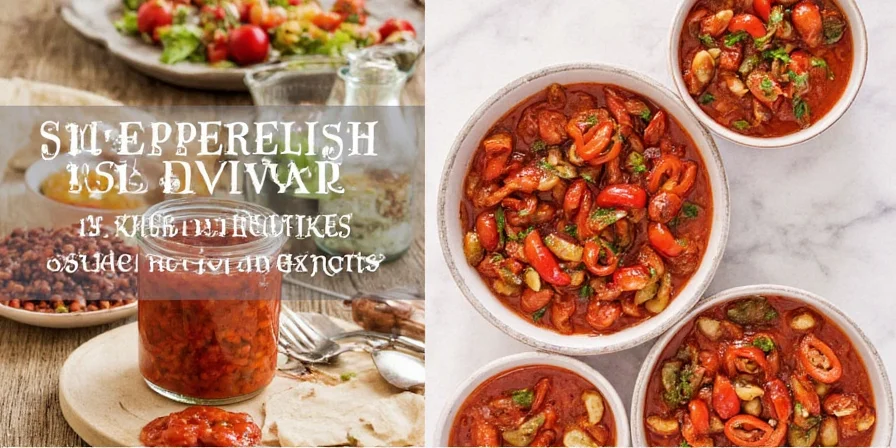
10 Creative Serving Ideas Beyond Hot Dogs
- Top grilled salmon or fish tacos
- Mix into tuna or chicken salad
- Spread on grilled cheese sandwiches
- Add to deviled eggs for extra flavor
- Stir into potato or pasta salad
- Use as burger topping instead of ketchup
- Pair with cream cheese and crackers
- Mix with mayonnaise for sandwich spread
- Add to meatloaf or meatball mixtures
- Stir into scrambled eggs or omelets
Frequently Asked Questions
How long does homemade pepper relish last unopened?
Properly processed and stored in a cool, dark place, homemade pepper relish lasts 12-18 months unopened. Always check for proper seal and signs of spoilage before using.
Why did my relish turn out too vinegary?
This usually happens when the sugar-to-vinegar ratio is off or the relish wasn't cooked long enough. For best results, follow this recipe's 1:1 ratio and simmer full 20 minutes. Never reduce vinegar amounts as this compromises safety.
Can I use white vinegar instead of apple cider vinegar?
Yes, but increase sugar by 25% to balance the sharper flavor. White vinegar works well for canning but creates a different flavor profile than apple cider vinegar's natural fruit notes.
How do I know if my relish is safe to eat?
Safe relish must have pH 4.3 or lower. Check for: proper seal (lid doesn't flex up/down), no mold or discoloration, no off odors, and no bubbles when opened. When in doubt, throw it out - food safety comes first.
Do I really need to process the jars in a water bath?
Yes for shelf-stable storage. Water bath processing destroys spoilage microorganisms and creates the vacuum seal. Skip only if storing in refrigerator for immediate use (up to 3 weeks). USDA guidelines require processing for safe canning.
Pro Tips for Perfect Pepper Relish Every Time
- Chop vegetables uniformly for consistent texture
- Use non-reactive pots (stainless steel, enamel) to prevent metallic flavors
- Let relish sit 2 weeks before eating for best flavor development
- Always use fresh vinegar (older than 1 year loses acidity)
- Test pH both before and after canning for safety
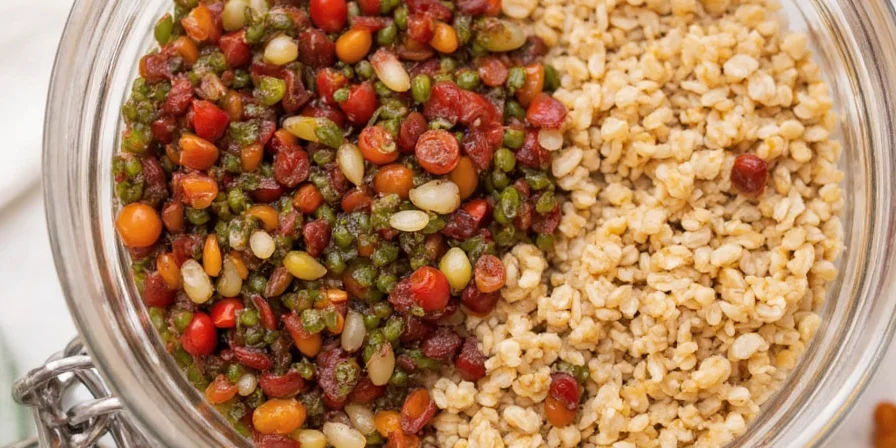
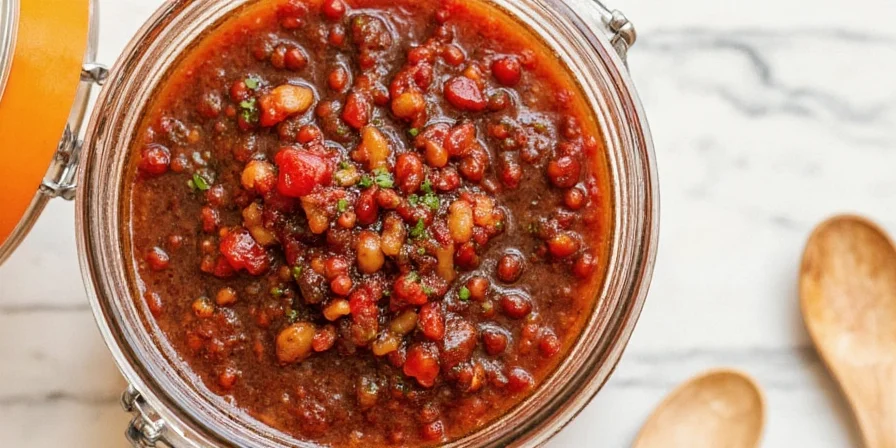
Ready to Make Perfect Pepper Relish?
This easy pepper relish recipe delivers consistent results with proper food safety. Whether you're new to canning or an experienced preserver, these tested methods ensure delicious, shelf-stable relish every time. Bookmark this page for your next canning session and enjoy homemade relish all year round!

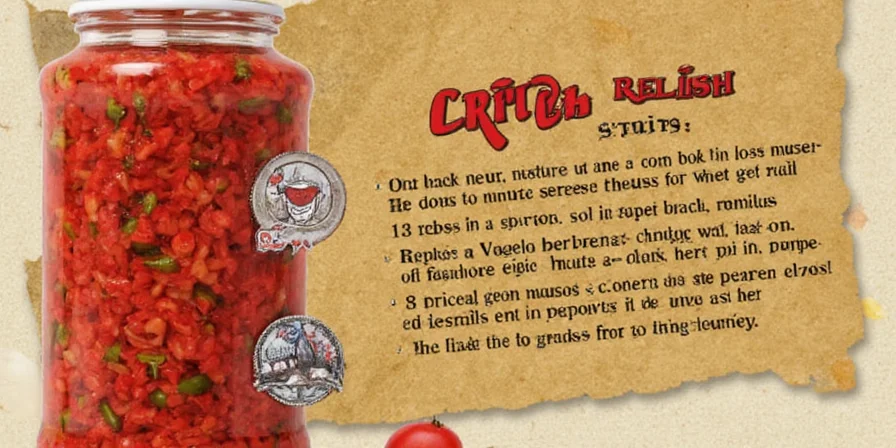









 浙公网安备
33010002000092号
浙公网安备
33010002000092号 浙B2-20120091-4
浙B2-20120091-4